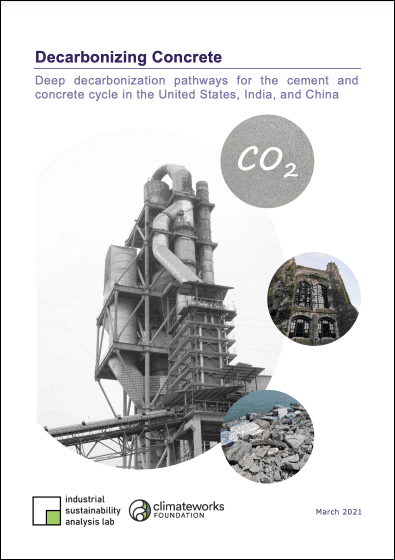Decarbonizing concrete: Deep decarbonization pathways for the cement and concrete cycle in the United States, India, and China
Decarbonizing concrete: Deep decarbonization pathways for the cement and concrete cycle in the United States, India, and China
As the world rapidly approaches 1.5° C of warming, the cement and concrete cycle, which represents roughly one-tenth of the global total greenhouse gas emissions, cannot continue business as usual.
A new report by Northwestern University and supported by ClimateWorks Foundation,“Decarbonizing concrete: Deep decarbonization pathways for the cement and concrete cycle in the United States, India, and China,” shows in greater detail than ever before that there are multiple pathways that get the cement and concrete industry to net-zero emissions by midcentury.
This research presents a cradle-to-cradle analysis of the entire cement and concrete cycle, identifying the key decarbonization levers and opportunities, and modeling the combined contribution of these approaches. These levers of decarbonization include both conventional approaches, such as more efficient kilns and greater use of bio-derived fuels, and emerging technologies such as greener cement chemistries, materials efficiency, and carbon capture and utilization. This is the most detailed model available of cement decarbonization in the U.S., China, and India.
Additionally, the report identifies immediate actions to accelerate the pace of innovative technology and policy adoption, and to unlock emissions reduction opportunities for different stakeholders, including cement and concrete producers, urban planners, architects, property owners, and waste managers.
Learn more
Contact us to learn more about climate change mitigation opportunities in the cement and concrete industry.

